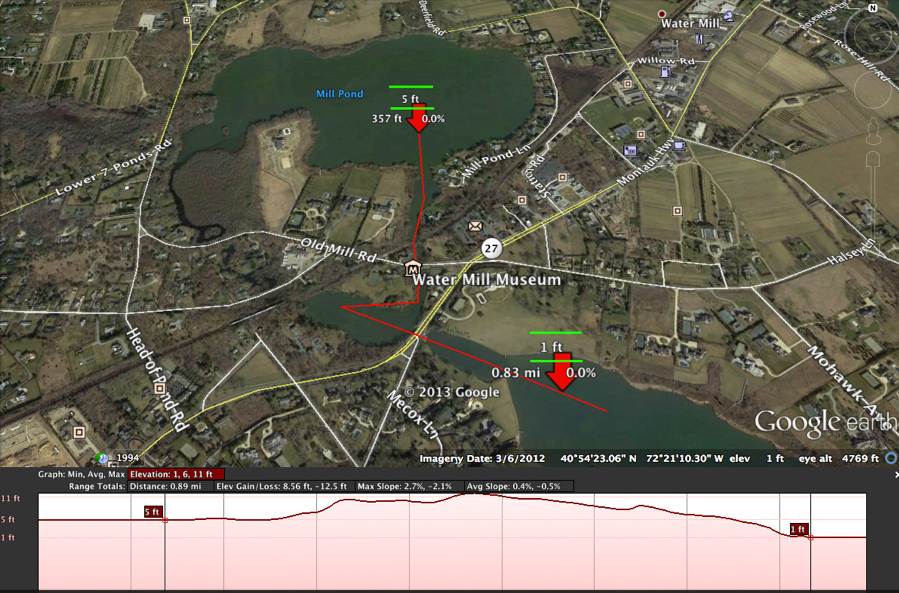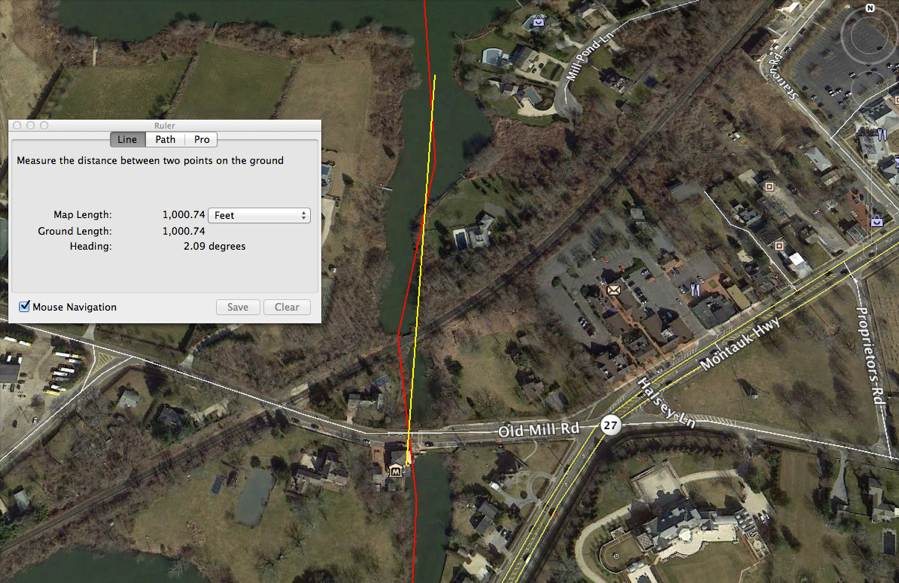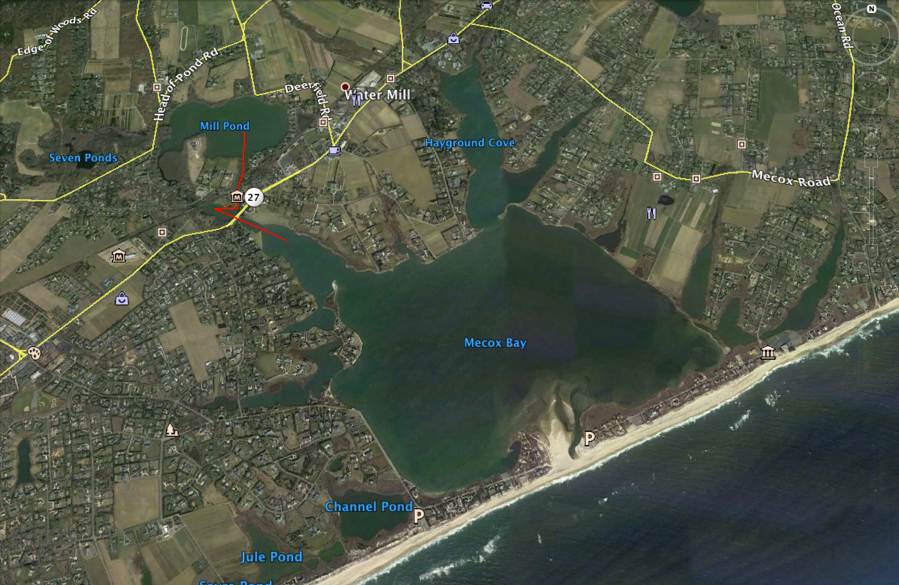© Copyright Raymond Sarno
Introduction
Howell family genealogy can be traced through the colonial era to England, back to Wales, and some argue even as far as Roman times, yet out of historical circumstance and his own endeavoring nature, Edward Howell emerged as a timeless patriarch of the family. Edward Howell’s participation in the ‘great migration’ to the ‘New World’ diverted his lineage from the gene pool of the English homeland, effectively spawning a new branch on the Howell Family Tree. Edward Howell’s immigration to America created a landmark in Howell genealogy. This landmark was made more identifiable by improvements in written records during the colonial era, compounded by the facts that more written records are generated by someone taking the great leap to the ‘New World’ as well as because of Edward Howell’s prominence in English and (even moreso) colonial American society. Thus we are able to pinpoint one man across the vast and ancient Howell Family Tree as a holdfast, the father of the American Howell Family.
Just as we may discern such a key figure within something as prodigious as Howell genealogy, can we also reveal some part within Edward Howell’s life that served to solidify his place in history? Is there a key part of the keystone of the Howell family? Answering this question is difficult when the subject is a man with a life as illustrious as that of Edward Howell.
Despite numerous other facts that independently make Edward Howell’s life noteworthy, including being born into wealthy English Lordship, it was his construction of a gristmill on Long Island that solidified his place in history as a pioneering colonist of America. Edward Howell’s mill became the basis for his political and social success in colonial America because of the importance of gristmills in the colonial era and because of the ingenuity that made the functionality of Edward Howell’s mill possible.
The ‘New World’
Edward Howell was born on July 22nd, 1584 in Westbury Manor of Marsh Gibbon in Buckinghamshire, England. As the eldest son of his father, Sir Henry Howell, Edward was granted the title ‘Sir,’ but ceased using it upon his arrival in America in the 1630s . Leaving England in search of religious freedom, Edward Howell initially settled in Lynn, Massachusetts with 500 acres granted to him by King Charles I.
He soon decided to relocate to what is now Long Island, a decision influenced by multiple factors: He did not find the religious freedom that he was seeking in Lynn, MA; he heard of ‘more fertile’ land to the south on Long Island;’ and he had access to transportation as he was already part owner of a sloop (small ship) that was used “from time to time to carry dissatisfied colonists south to Long Island”.
Edward Howell petitioned the Earl of Sterling, who was considered by England to be the owner of Long Island. The Earl of Sterling, via his agent, James Farrett, granted Edward Howell eight square miles of land, and included in his grant unusually unregulated rights for the settlers to use the lands as they saw fit. This could have been due to Edward Howell’s high status in England. As the primary financier of the endeavor, Edward Howell was the leader of the group of settlers destined for Long Island, known as “The Undertakers” because of the magnitude of their undertaking.
According to one source, “The Undertakers” unsuccessfully tried to settle in Dutch territory. They eventually made landfall in 1640 at present-day Conscience Point, located on the North side of Long Island <SEE APPENDIX>. “The Undertakers” came to a “tiny settlement, called ‘Mecox,’ a name taken from the Shinnecock Indians” meaning “’flat or plain country.’” On July 7, 1640, the town of Southampton was founded. The settlement grew over the next few years to 43 families as more settlers joined the original “Undertakers.” Edward Howell was the leader of these settlers well before their departure from Lynn, Massachusetts, (Clark, 2013), and remained a prominent—if not the most prominent—leader in the society that they subsequently created.
The Mill
Before the development of internal combustion engines revolutionized agricultural technology, mills were a critical part of society. Mills were able to grind grains into flour much more productively than could be done by hand, making them a necessity for any thriving colonial settlement. Edward Howell understood this. Being a regional leader and probably the most wealthy man on Long Island, he entered into an agreement between himself and the town of Southampton “’to build for himself and to supply the necessities of the Towne, a sufficient mill at Mecoxe [sic] and to receive in return for himself and his heirs forever, forty acres of land.’”
This mill was an extraordinary accomplishment due to both the ingenuity of its design and the collaborative efforts of the community required to build and maintain it.The two predominant mill types during this era were powered either by wind or water. Water-powered mills were significantly more effective but required a stream with a swift-flowing current, of which the Southampton area of Long Island had none. The strength of a stream’s water current is a direct function of the elevation change between the bodies of water it connects. The more elevation lost by the water, the more potential energy the water is losing as it is pulled downstream by gravity. It makes sense then that there were no streams with sufficient strength of current for a mill in the area considering that the long-held Indian name for the area, “Mecox,” meant “flat or plain country.”
Before Edward Howell’s mill, only wind-powered mills existed on Long Island. Knowing that a water-powered mill would be significantly better for the surrounding communities, Edward Howell engineered a solution to the problem posed by the local terrain, to the surprise of his fellow settlers. Many sources state that Edward Howell chose the forty acres that were to be given to him because within that plot was the only stream with a strong enough current to allow for the construction of a water mill. This is not quite true. His forty-acre plot was the only place where it was possible to create a current strong enough to power a mill with the resources and manpower available at the time.
Creating this current depended upon the regulation of water levels between two ponds, which was in turn dependent upon the regulation of the water level of Mecox Bay, the latter endeavor requiring constant maintenance of the Bay’s outlet to the Atlantic Ocean.
The original mill, built in 1644, was an overshot mill that required the construction of a dam on the outflow stream of the present day Mill Pond in Water Mill, Long Island, New York. An overshot mill requires a significant and abrupt elevation differential so that water may fall over the top of the mill wheel, propelling it as the water falls to the lower body of water. Such an abrupt elevation change in water is usually accomplished by constructing a dam, which is exactly how Edward Howell built his original mill in 1644.
Maintaining a low water level in Mecox Bay was essential in order to create a sufficient difference in water elevation on either side of the mill’s dam. This was accomplished by digging an outlet to the sea from Mecox Bay, called a “sea-poose,” and Indian word that meant “little river.” This outlet would naturally fill itself, preventing Mecox Bay from draining, which prevented Edward Howell’s mill from functioning. Thus, it would regularly have to be re-dug. In the colonial era, this meant digging it out with hand tools, and required a community effort. The surrounding community was obligated to cooperate in an effort to maintain the sea-poose so that they may use Edward Howell’s mill. “If it got too full the magistrate (Edward Howell) gave notice that every man from sixteen to sixty years of age was obliged to assist in digging out the sea-poose.” This sea-poose is still dug out today, although it is done by crane and bulldozer.
Although it was customary for mill owners to receive a portion of the flour that was ground at their mill as a fee, sources suggest that Edward Howell received no fees for allowing locals to use his mill. Instead, he received a one-time payment “for himself and his heirs forever, forty acres of land.” This unique situation in which the local terrain demanded constant upkeep in order for the mill to be used meant that the community had to work together in order for the mill to work. Without the help of the community, Edward Howell would not have a working mill. If his mill could not work, the community would have a significantly lower capacity to produce flour. The people needed the mill; the mill needed the people.
Edward Howell further validated himself as the community’s leader by cleverly engineering a mill that significantly increased the agricultural productivity of Long Island, creating a strong community with himself at the center.
The mill became the most important landmark and reference point on Long Island. In writings from the era, people are referred to as “men, West of the mill” or “men, East of the mill.” This is understandable because nearly everyone had to make use of the mill and nearly everyone had to contribute to the maintenance of the sea-poose, making Edward Howell’s mill the common denominator among the colonists of Long Island.
It is not surprising then, especially considering that he was already an influential regional leader, that Edward Howell held the position of magistrate (judge) until 1653, which in his time was usually the highest office in a region as they were responsible for settling disputes, passing judgment on criminals, and their word carried the most weight in any community decision. In 1647, Edward Howell was appointed as Governor’s assistant to the Connecticut Colony and became a member of the Connecticut Legislature in Harford.
After Edward
Edward Howell died in 1655 at the age of 71. Edward Howell relinquished his government positions (except for his position on the Connecticut legislature, which he held until death) and sold the mill in 1653, presumably due to illness or age. Records indicate that the mill was owned in 1653 by William Ludlam Sr. who “received permission from the town to ‘lower the mill at Seven Ponds. The building was dragged on skids and moved 1,000 [ft] down the stream where it has stood ever since.” The mill stayed in the Ludlam family for almost a century. It has since been passed to many different owners and been used for a variety of uses, including paper manufacturing, the dyeing of wool cloth, ice cream making, a tea room, and a cooking school. The mill was purchased in 1942 by a local women’s group who incorporated themselves as “The Ladies Auxiliary of Water Mill, Inc.” The group restored the mill into a museum, which is still open today, 369 years after its construction. Edward Howell’s Water Mill was added to the National Register of Historic Places in 1983, National Historic Places Registry reference number 78001919.
Conclusion
Edward Howell immortalized himself through his deeds, which made him a patriarch during his life and forevermore as the father of the American Howell Family. Of his many notable accomplishments, none contributed to his permanence in history more than the construction of his water mill that provided for and united the first English settlers of Long Island. The keystone of the American Howell Family is not a keystone at all; it is a grinding stone.
Edward Howell embodied the American spirit as an enterprising man who took risks and realized success through industriousness and ingenuity. He led colonists to new lands where his leadership proved ever greater as he oversaw the spawning of a thriving society. The Howell Family motto, “Tenax Propositi,” can mean “firm of purpose” or “tenacious in purpose” depending on the translation. Whichever the case, Edward Howell lived by this motto in all that he did, and played a significant role in shaping early America as a result. I am proud to be a descendant of such a prominent figure in American history.
Author’s Notes
Credibility of Sources
With regards to the credibility of my sources, my commentary is divided along the same lines as my research, generally sorted between personal information surrounding Edward Howell and more concrete knowledge such as geographic data or information about historical mill technology.
The information available about Edward Howell’s life in England and America seems to be compiled from many sources, most of which seem to fill in blanks in order to draw their own conclusions, a problem which is compounded by the fact that many of these sources appear to borrow from each other. For example, the record of Edward Howell’s name on the list of ‘freemen’ in Boston is a key primary source of data that many use—or misuse—when piecing together the timeline of his life. Beyond the issue of discrepancies among sources about the actual date that Edward Howell’s name appears on the list of freemen is the issue of the differing assumptions made by many sources about this date, assumptions that probably should not be made at all. The most rampant of these assumptions is that the date on the list of freemen was the date that Edward Howell arrived in America, which is unlikely. Others cite the date as the day that the list of freemen was ‘published,’ implying that Edward Howell may have sworn “The Oath of a Freeman” prior to the list’s date. This is one of many examples of discrepancies among sources regarding specific dates in Edward Howell’s life. I did not have the time or the money to seek out the best possible sources of information about the specifics of Edward Howell’s life, thus any dates or years I mention in my essay are educated conclusions based on a logical breakdown of information from all of my sources. Despite the taboo of Internet sources among academics, this is a case in which we already know that the sources lack credibility, so we do not expect every date to be perfectly accurate, and we may even be able to increase overall accuracy by cross-referencing sources.
My other lines of research covered either extremely specific data, such as the altitude at the water’s surface of the ponds in Water Mill, NY, or information that is general enough to be credible wherever it is found, mainly the history of mill technology and the mill’s place in colonial American society. Information on these topics at the degree of specificity that I needed would be difficult for anyone to form a debatable opinion about; therefore any source I use is certainly credible enough. For example, the statement that ‘gristmills were an important part of colonial society because they allowed people to grind their grain into flour without having to do it by hand’ is understandable enough based on common knowledge that it is credible information whether it appears on a website or in The Journal of Colonial American Historians, Volume 231: Gristmills.
Appendices
Appendix A: Elevation Profile of the ponds in Water Mill, LI, NY

This graphic depicts the ‘Mill Pond,’ and Mecox Bay with Edward Howell’s water-powered mill in the middle (labeled as Water Mill Museum). The elevation differential between the two bodies of water can be seen from the elevation profile. The Mill Pond has a 5 ft. surface elevation in comparison to the 1 ft. surface elevation of Mecox Bay. Note that the information may have a margin of error. Source: Google Earth
Appendix B: Likely site of the original Water Mill, built in 1644

When Edward Howell transferred ownership of the mill to William Ludlam in 1653, Ludlam moved the mill “1,000 [ft.] down the stream.” Note that the ‘Probable Original Site,’ is almost exactly 1,000 feet up stream from the ‘Current Mill Site’ (see the measurement in the box on the left).
Appendix C: The sea-poose

The sea-poose of Mecox Bay. Still maintained today.
Bibliography
- ‘Beau’. (2007). Edward Howell. Retrieved Aug 27, 2013, from FindAGrave.com: http://www.findagrave.com/cgi-bin/fg.cgi?page=gr&GRid=17595682
- Clark, C. (2013). Edward Howell Family. Retrieved August 28, 2013, from Edward Howell Family: http://edwardhowellfamily.org/
- Descendants of Edward Howell of Southampton, Long Island, NY. (n.d.). Retrieved from Ancestry.com: http://wc.rootsweb.ancestry.com/cgi-bin/igm.cgi?op=GET&db=drw7&id=I022
- Edward Howell. (n.d.). Retrieved August 28, 2013, from James R. Macdonal Laboratory at Kansas State University: http://jrm.phys.ksu.edu/genealogy/needham/d0005/I2572.html
- Haresign, M. (n.d.). History of the Water mill. Retrieved August 29, 2013, from Water Mill Museum: http://www.watermillmuseum.org/history_mill.htm
- Hazen, T. R. (n.d.). The History of Flour Milling In Early America. Retrieved August 29, 2013, from Angelfire.com: http://www.angelfire.com/journal/millrestoration/history.html
- How We Were. (n.d.). Retrieved August 28, 2013, from Our Water Mill: http://www.ourwatermill.org/how_we_were.htm
- McGuire, E. B. (n.d.). Restoration of a 1644 Grist Mill. Retrieved August 30, 2013, from Angelfire.com: http://www.angelfire.com/journal/pondlilymill/watermill.html
- National Register of Historic Places. (n.d.). National Register of Historic Places. Retrieved August 30, 2013, from http://www.nps.gov/nr/: http://www.nps.gov/nr/research/
- Pinto, V. (2010, October 15). One of Town’s Settling Families Reunites. The Sag Harbor Express .
- Ross, E. H. (1968). Descendants of Edward Howell. Winchester, MA: The University Press.
- Southampton, New York. (n.d.). Retrieved August 29, 2013, from Wikipedia.org: http://en.wikipedia.org/wiki/Southampton,_New_York#History
- The Howell family of Long Island. (n.d.). Retrieved August 28, 2013, from longislandgenealogy.com: http://longislandgenealogy.com/Surname_Pages/howell.htm
- org. (2004). Retrieved August 29, 2013, from http://www.thomjoy.us/Halsey/I0253.html
- Timeline of Lynn, Massachusetts history. (n.d.). Retrieved August 30, 2013, from Wikipedia.org: http://en.wikipedia.org/wiki/Timeline_of_Lynn,_Massachusetts,_history
